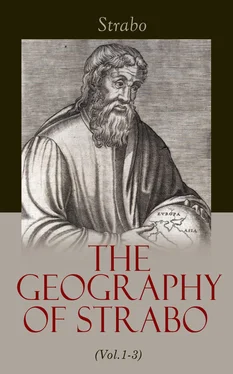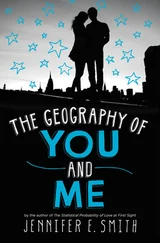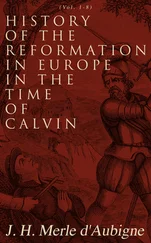36. At Meroe and Ptolemais 937in the Troglodytic the longest day consists of thirteen equinoctial hours. These cities are at nearly equal distances between the equator and Alexandria, the preponderance on the side of the equator being only 1800 stadia. The parallel of Meroe passes on one side 938over unknown countries, and on the other 939over the extremities of India. 940At Syene, and at Berenice, which is situated on the Arabian Gulf and in the Troglodytic, at the summer solstice the sun is vertical, and the longest day consists of thirteen equinoctial hours and a half, and the whole of the Greater Bear appears within the Arctic Circle, with the exception of his thighs, the tip of his tail, and one of the stars composing his body. The parallel of Syene traverses on one side 941the portion of Gedrosia occupied by the Ichthyophagi, and India; and on the other side 942the countries situated south of Cyrene by rather less than 5000 stadia.
37. In all the countries situated between the tropic and the equatorial circle, the shadows fall [alternately] on either side, north and south. In those which are north of Syene and beyond the summer tropic the shadows at mid-day fall to the north. The former are called amphiscii, the latter heteroscii. There is also another method of determining what places are under the tropic, which we spoke of in our observations on the zones. The soil is sandy, arid, and produces nothing but silphium, while more to the south the land is well irrigated and fertile.
38. In the countries situated about 400 stadia south of the parallel of Alexandria and Cyrene, where the longest day consists of fourteen equinoctial hours, Arcturus passes the zenith, slightly declining towards the south. At Alexandria at the time of the equinox the proportion which the gnomon bears to the shadow is as five to seven. 943Thus they are south of Carthage 1300 stadia, that is, admitting that in Carthage at the time of the equinox the proportion which the gnomon bears to the shadow is as eleven to seven. This parallel on the one side 944passes by Cyrene and the regions 900 stadia south of Carthage as far as the midst of Maurusia; 945and on the other side 946through Egypt, 947Cœlosyria, Upper Syria, Babylonia, Susiana, 948Persia, 949Carmania, 950Upper Gedrosia, 951and India.
39. At Ptolemais in Phœnicia, 952and at Sidon 953and Tyre, 954the longest day consists of fourteen hours and a quarter. These cities are north of Alexandria by about 1600 stadia, and north of Carthage about 700. In the Peloponnesus, and about the middle of Rhodes, at Xanthus 955in Lycia, or a little to the south of this place, and at 400 stadia south of Syracuse, 956the longest day consists of fourteen and a half equinoctial hours. These places are distant from Alexandria 3640 stadia.... This parallel, according to Eratosthenes, passes through Caria, Lycaonia, Cataonia, Media, the Caspian Gates, and India next the Caucasus. 957
40. In the parts of the Troad next Alexandria 958in Amphipolis, 959Apollonia in Epirus, 960the countries just south of Rome and north of Neapolis, the longest day consists of fifteen hours. This parallel is distant from that of Alexandria in Egypt 7000 stadia to the north, above 28,800 stadia north of the equator, and 3400 stadia from the parallel of Rhodes; it is south of Byzantium, Nicæa, 961and Marseilles 1500 stadia. The parallel of Lysimachia 962is a little to the north, and according to Eratosthenes passes through Mysia, 963Paphlagonia, Sinope, 964Hyrcania, 965and Bactra. 966
41. About Byzantium the longest day consists of fifteen and a quarter equinoctial hours; the proportion borne by the gnomon to the shadow at the summer solstice, is as 120 to 42, minus one-fifth. These places are distant 967from the middle of Rhodes about 4900 stadia, and 30,300 from the equator. Sailing into the Euxine and advancing 1400 stadia to the north, the longest day is found to consist of fifteen and a half equinoctial hours. These places are equi-distant between the pole and equatorial circle; the arctic circle is at their zenith, the star in the neck of Cassiopeia is within this circle, the star forming the right elbow of Perseus being a little more to the north.
42. In regions 3800 stadia north of Byzantium the longest day consists of sixteen equinoctial hours; the constellation Cassiopeia being brought within the arctic circle. These regions are situated around [the mouth of] the Dnieper and the southern parts of the Mæotis, at a distance from the equator of 34,100 stadia; and the northern part of the horizon during almost all the summer nights is illuminated by the light of the sun; a certain degree of light continuing from sunset to sunrise. For the summer tropic is distant from the horizon only the half and the twelfth part of a sign 968[of the zodiac], and this therefore is the greatest distance of the sun below the horizon at midnight. With us when the sun is at this distance from the horizon before sunrise and after sunset, the atmosphere is enlightened to the east and west respectively. In the winter the sun when at the highest is nine cubits above the horizon. 969These places, according to Eratosthenes, are distant from Meroe rather more than 23,000 stadia, 970for he says that [from the parallel of Meroe] to the Hellespont 971there are 18,000 stadia, and thence to the Dnieper 5000 more. In regions distant 6300 stadia from Byzantium, and north of the Mæotis, the sun during the winter time is, when highest, six cubits [above the horizon]. The longest day consists of seventeen hours.
43. The countries beyond this which border upon the regions uninhabitable on account of their cold, have no interest to the geographer. He who desires to learn about them, and the celestial phenomena which Hipparchus has described, but which we pass over as being too much in detail for our present undertaking, must seek for them in that author. The statements of Posidonius concerning the periscii, the amphiscii, and the heteroscii are likewise too detailed. Still we must touch on these points sufficiently to explain his view, and to point out how far such matters are serviceable in geography, and how far not. The terms made use of refer to the shadows cast from the sun. The sun appears to the senses to describe a circle parallel to that of the earth. 972Of those people for whom each revolution of the earth produces a day and a night, the sun being carried first over, then under, the earth, some are denominated amphiscii, others heteroscii. The amphiscii are the inhabitants of countries in which when a gnomon is placed perpendicularly on a plane surface, the shadow which it casts at mid-day, falls first to one side then to the other, as the sun illumines first this side, then that. This however only occurs in places situated between the tropics. The heteroscii are those amongst whom the shadow always falls to the north, as with us; or to the south, as amongst those who inhabit the other temperate zone. This occurs in all those regions where the arctic circle is less than the tropic. Where however it becomes the same as or greater than the tropic, this shows the commencement of the periscii, who extend thence to the pole. In regions where the sun remains above the horizon during an entire revolution of the earth, the shadow must evidently have turned in a complete circle round the gnomon. On this account he named them periscii. However they have nought to do with geography, inasmuch as the regions are not habitable on account of the cold, as we stated in our review of Pytheas. Nor is there any use in determining the size of this uninhabitable region, [it is enough to have established] that those countries, having the tropic for their arctic circle, are situated beneath the circle which is described by the pole of the zodiac 973in the [diurnal] revolution of the earth, and that the distance between the equator and the tropic equals four-sixtieths of the great circle [of the earth].
Читать дальше












![Anne Blunt - A Pilgrimage to Nejd, the Cradle of the Arab Race. Vol. 2 [of 2]](/books/750183/anne-blunt-a-pilgrimage-to-nejd-the-cradle-of-the-thumb.webp)